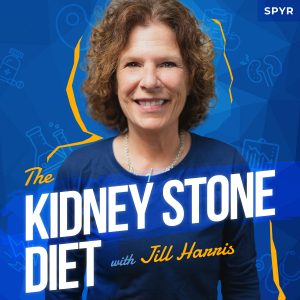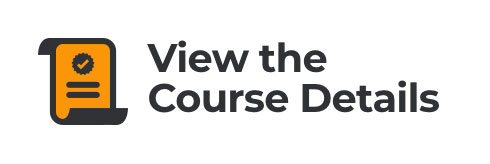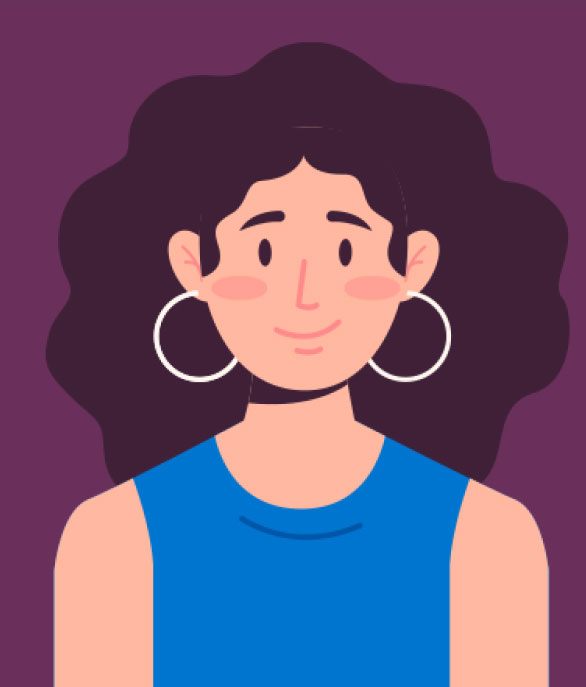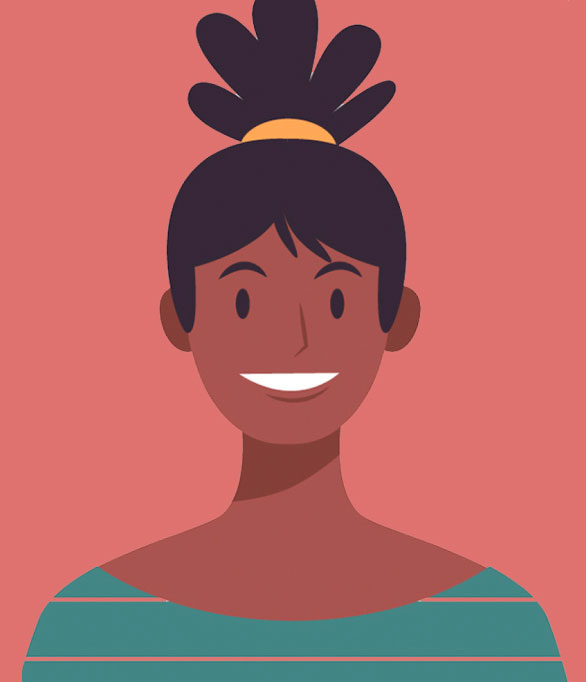This week Jill answers a frequently asked question, or should I say concern. It’s time to debunk the myth that there’s nothing to eat on a low oxalate diet!
Jeff Sarris: Welcome back to the Kidney Stone Diet podcast, the show about reducing your kidney stone risk and living your best life. I’m your host and fellow student, Jeff Sarris.
Jill Harris: And I’m Jill Harris, Harris and Sarris, your kidney stone prevention nurse. Happy to be here, Jeff.
Jeff Sarris: Yeah, it is funny when we first did your site, I couldn’t help but look at your name in the header and always see mine because it’s the same number of characters, almost the same letters even. It’s weird, but yeah, no relation. I know someone actually asked if we were related, but no, we’re not. We’re just friends and partners in this journey and building this.
So this week, we are changing it up. We’re not going to do a question. We are going to do, well, I guess it is a question, but it’s a frequently asked question within the Kidney Stone Prevention Diet community on Facebook. So what’s up today, Jill?
Jill Harris: Okay, so I love talking about this one so much. It is the most— it is the most— popular thing whether people get on the phone with me because they’re paying for a private call or they’re in the free Facebook group, whatever it is. They say “Jill, I’ve got nothing to eat.” What I love is debunking that. If your doctor has done anything, they threw an oxalate list at you and they told you to drink more water. That’s basically what people get. And once you start Googling oxalate, well, you’re going to think you can’t eat anything. One list says this, and another list says that and you don’t know what’s going on. It’s so overwhelming. It is just like disheartening and demoralizing.
There’s More to Eat on a Low Oxalate Diet
So, that is the most frequent thing I hear: “Jill, there nothing to eat. I can’t eat anything anymore. I’ve cut out everything from my diet. What am I supposed to do eat carbs all day?” That’s what people think, “Okay, I’m going to go on a high starch diet.” Please don’t do that, especially if you’re diabetic, obviously. So, it’s very confusing to people. Most of my job, most of my job is bringing food back to people, showing them what they can eat, how they’re going to incorporate it back into their diet.
We tend to eat the same foods over and over that are really high in oxalate, like sweet potatoes! I work with bodybuilders who say, “Jill! I got a kidney stone.” Well, you’re eating four and five friggin’ sweet potatoes every day and what did you expect? You ain’t get no calcium, so your oxalates sky high! And can you eat any more chicken?! Because eating chicken, broccoli, and sweet potatoes every day, five times a day, I don’t even know what people are thinking in the bodybuilding world. Anyway, they don’t want to think about it since they have to eat a lot (or so they think) to build their muscle and so that’s what they’re doing.
But anyway, most of my job is bringing food back to people showing them that within normal portions, you can eat most foods, even if they’re on the higher oxalate list. On KidneyStoneDiet.com, our website, we have the safe-oxalate list. If you go through that list, you’re going to be like, “hey, she has this food, which I know is higher in oxalate on the safe list!” Well, yeah, if you get 100 milligrams a day, which we allow people to get 100 milligrams a day unless your doctor has told you otherwise because you have a bariatric surgery, or malabsorption issues, you can easily fit most of those foods back into your diet. The point was that you were overeating spinach; you were overeating buckwheat groats. People do and it’s hundreds of milligrams. Beet juice, beet salads, beets, beets, beets!
So, you’re choosing the highest oxalate foods because you heard they were “healthy,” and then you ate them in any quantity you wanted because more of that would be more health, right? That’s what we think. And it makes sense until you make a kidney stone. So look, for some people they can get away with that they’re not genetically prone to make kidney stones, but some people are, a lot of people are, millions of patients in the world are. So, in general, part of the Kidney Stone Diet, which we don’t have in a graph, or on a goal, but I will sing it all the time, is we need to eat all foods within a normal portion size. There’s a lot of food in the world, people, spread it out!
So when you come to me and say there’s nothing to eat, I’m going to push back, and then I’m going to teach you why there is lots to eat. You can absolutely bring foods back like a sweet potato, do you have to eat a whole one? Can you split one with your partner? I have a sweet potato right in my basket, but I am going to eat a fourth of it with my meals, not the whole thing. I don’t need a whole sweet potato. But because we know it’s a healthier product, we tend to overeat it. Along with— people, please pay attention to what I’m saying— along with not getting enough calcium into your diet, that is key. The only way oxalate can leave your body is to join with calcium and leave it through the stool. So, if you’re not eating or drinking things that have calcium in it, you’re not going to get rid of the excess oxalate.
So you have plenty to eat! Diabetics will say, “oh my god, what am I gonna do?! I can’t have this, I can’t have that on diabetes!” You can! Just watch the portion size on some some of these things. Now, spinach, because it’s 600 plus milligrams a cup, you can’t have that no more. I know you’re sad about it, but you’re going to have to get over it because stents and ureteroscopies are a lot worse than your cup of spinach, so you’re just gonna have to get over. I’m going to tell you, woman, you can’t eat no garlic. I’m sad, I know. I feel your pain with your spinach, but it is what it is. Go look at that safe oxalate list, see all the food you can eat, learn how to incorporate those foods into your diet. So you do it safely and stay under your 100 milligram of oxalate a day allotment.
I’m gonna say that at the end, because some people will get in the comments and say, “Jill, my surgeon said 50.” Well, that’s what your surgeon said, because you had weight loss surgery, so you will have absorption problems now. You know, it’s different for everybody, but the majority of people can safely have 100 milligrams of oxalate a day. That’s conservative, by the way, people. And if you ever wonder, again, do your follow-up urine collections to see where your oxalate levels are, so you get a feel for what foods because at the end of the day, we all absorbs things differently.
Every Body is Different
Jeff and I are going to eat the same foods. I’m going to absorb more or less than he is just because we have different genetic makeup, right? So this is why the Kidney Stone Diet is a set of goals. We’re telling you, here’s your goal. Here’s your sugar goal, here’s your salt goal, here’s your meat protein goal, here’s your calcium goal, here’s your hydration goal, and here’s your oxlate goal. If you want to be a vegan or a vegetarian, or paleo or whatever you want to do, we’re cool with that. We just want you to eat foods that you’re going to be able to do long-term to keep you healthy. And what is healthy for my body may not be healthy for Jeff’s body.
I just don’t understand why the diet industry is telling people in general, what is the best thing for everyone. I don’t get it because we all have different medical conditions. We all have different food sensitivities and allergies. So I think that’s what leads to more confusing confusing aspects of diets for patients, too, because they’re like, “Okay, I see that that diet says that but I can’t eat those things.” There’s certain things you may have that that diets not going to work for you. So, I guess what I’m saying people is on the Kidney Stone Diet, we’re giving you a set of goals. How you get there is your own business. We want you to do so within reason. Have healthy things within normal portion sizes that maintain those goals, so you lower your stone risk. But also remember how you do it is up to you so you do have control.
If you want half a sweet potato, minus that amount of oxalate from your total of 100 and you’ve got that much more to play with for the day. If you’re deciding to eat something that’s particularly higher in oxalate, make sure you pair your calcium based beverage with that, a food like yogurt, or there’s non dairy sources of things. That will help lower your oxalate levels, too. It’s complicated and that’s why we offer the premium service as we do so you can get educated. That’s why we’re doing the YouTube channel. That’s why we put on the Facebook group because it’s very complicated and trying to get this down into bite-sized pieces is hard. The diet industry wants us to think that everything’s easy, breezy, and if you don’t get it in a week, there’s something wrong with you. Changing your whole diet? You’re damn right it’s hard! It’s gonna take time.
Listen, if I say I want to start learning paint, I’m gonna paint today. Do I think in a month, I’m going to be Rembrandt? I’m not going to be, people. Why do we think we’re supposed to change our diet in 10 days, and we should know everything? I’ve dedicated my entire career to studying nutrition. Not only that, but how people change habits, all of it. If I say this to one person, it may not work for another person. So listening skills, communication, all of it, it’s difficult to get these messages to people, because everyone is so very different. So that’s all. I don’t even know, you never know what I’m gonna go with this stuff.
Jeff Sarris: But this is why we have the premium products, like the meal plans. It’s inspiration! It’s not “eat this, eat that, eat this. It’s inspiration to see how you can fit this lifestyle, this diet, into your current lifestyle. And, like you said, whether you’re eating paleo, vegetarian, whatever it is, there are different paths that people can take. We have meal plans for the inspiration, but you have the one-on-one, or one-on-one and group calls as the way to help tailor this to people. So like someone coming in that will be a part of the course, they then get access immediately to the group calls where you’re right there working with them.
Jill Harris: Right! And, because everyone’s different, I may have 10 people in those group calls, and Tammy’s saying this, and then Pam’s saying that, and Henry’s saying this, and everybody’s saying different things. That’s why, one day, it will not work for everybody. So, you’ve got to listen to all these people and figure out how are you going to help them incorporate the changes they need for what’s going on with them. And there’s different stone types, and there’s different secondary medical conditions that are leading to the stone, so it’s complicated. This is why your urologist’s job is to get those stones safely out of your urinary tract. That’s a big enough job! They ain’t studying nutrition, and then teaching you how to incorporate all these things.
That’s not what their deal is. They’re surgeons. So, you know, it’s tough because you’re also going to a doctor that is dealing with something different, the treatment plan. There are certainly urologists that can help a patient do a treatment plan, but a lot them can’t. So we get mad at our urologist because how come they’re not fixing all of this? Where’s my treatment plan? They taking stones out of you, and we need them to be very good at what they do, so then, you know, you get help elsewhere. We’re giving you the help elsewhere, so here it is, people.
Jeff Sarris: I think that was great. I mean, that really covers the the gamut because that is the big question that you’re seeing all the time: what do I eat?
Jill Harris: Yes! So there’s plenty to eat, I promise. There’s nothing I take away, except the 75 milligrams of oxalate and over foods, so there’s like five or seven foods you should avoid. That’s it! Otherwise, you can safely incorporate everything. You just have to figure out the how for you.
Jeff Sarris: For sure! To find the safe oxalate list and more resources, you can head over to KidneyStoneDiet.com. If you have a specific question, because we will be taking listener questions again in future episodes, we have a phone number. It’s 773-789-8763. Leave a message and we’ll feature your question on another episode. Thanks again everyone for listening and we will see you next time!
Jill Harris: Bye, guys!














Leave a Reply